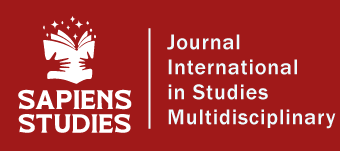Elaboration of dry wine based on passion fruit (Passiflora edulis) and banana (Musa paradisiaca L.): Physicochemical and organoleptic characterization
DOI:
https://doi.org/10.71068/n6vay372Keywords:
Dry wine, pas fruisiont, banana, fermentationAbstract
The objective of this research was to produce a dry wine based on passion fruit and banana, using fruits discarded for not meeting commercial standards, in order to reduce food waste and promote the circular economy in the province of El Oro, Ecuador. Three fruit concentrations (25%-75%, 50%-50%, 75%-25%) were evaluated to determine the optimal combination that maximizes the organoleptic and physicochemical properties of the wine. The results showed that the MB2 concentration (50% passion fruit and 50% banana) presented the best values in Brix (9.722 ± 0.585), alcohol content (9.840 ± 0.669% v/v) and pH (3.670 ± 0.014), complying with Ecuadorian regulations for fruit wines. In addition, this treatment obtained the highest overall acceptance in the sensory tasting, standing out for its balanced flavor and pleasant aroma. The MB2 concentration was classified as a dry wine, with a residual sugar content of 2.5 g/L. This project not only offers a sustainable alternative for the use of discarded fruit, but also contributes to the development of innovative products that can diversify the region's agroindustrial supply. Future research could focus on the analysis of bioactive compounds and the optimization of the fermentation process to further improve the quality of the product.
References
Acaroz, U., Arslan, D., & Ince S. (2019). A wide perspective on nutrients in beverages. Revista Nutrients in Beverages. ElSevier. https://doi.org/10.1016/B978-0-12-816842-4.00001-0
Afam, I., Henry, S., Thakhani, T., Adewale, O., Henry, O., & Tonna, A. (2021). Antioxidant-rich natural fruit and vegetable products and human health. International Journal of Food Properties, 24(1), 41–67. https://doi.org/10.1080/10942912.2020.1866597
Akubor, P. I., Obio, S. O., Nwadomere, K. A., & Obiomah, E. (2003). Production and quality evaluation of banana wine. Plant Foods for Human Nutrition, 58, 1-6. https://doi.org/10.1023/B:QUAL.0000041138.29467.b6
Campos-Rodríguez, J., Acosta-Coral, K., Moreno-Rojo, C. & Paucar-Menacho, L. (2023). Maracuyá (Passiflora edulis): Composición nutricional, compuestos bioactivos, aprovechamiento de subproductos, biocontrol y fertilización orgánica en el cultivo. Scientia Agropecuaria, 14(4), 479-497. https://doi.org/10.17268/sci.agropecu.2023.040
Considine, J., & Frankish, E. (2023). A complete guide to quality in small-scale wine making. Elsevier. https://doi.org/10.1016/C2021-0-01935-0
Coronel, M. (2008). Los vinos de frutas. Facultad de Ciencias de la Ingeniería, Universidad Tecnológica Equinoccial. Quito-Ecuador, 57-59.
González, P., Rivera, J., & Martínez, L. (2021). Impacto de los carotenoides en la salud: Beneficios del consumo de maracuyá. Journal of Food Research, 15(4), 113-120. https://doi.org/10.1007/s12345-021-0987
Instituto Nacional de Estadística y Censos (INEC). (2022). Producción agrícola: Año 2022. https://www.inec.gob.ec/estadisticas-agricolas
Jackson, R. S. (2020). Wine science: Principles and applications (5th ed.). Academic Press.
Lockhart, R., & Smith, J. (2020). The cognitive benefits of bananas: Memory and brain health. Nutritional Neuroscience, 23(7), 459-467. https://doi.org/10.1080/1028415X.2020.1234567
Mallawaarachchi, M., Madhujith, T., Suriyagoda, L., & Pushpakumara, D. (2021). Antioxidant efficacy of selected underutilized fruit species grown in Sri Lanka. Tropical Agricultural Research, 32(1), 68–80. http://doi.org/10.4038/tar.v32i1.8443
Matei, F. (2016). Chapter 14 – Technical Guide for Fruit Wine Production. In Revista Science and Technology of Fruit Wine Production (pp. 663-703). ScienceDirect. https://doi.org/10.1016/B978-0-12-800850-8.00014-4
Montero, M., Rojas-Garbanzo, C., Usaga, J. & Pérez, A. (2021). Composición nutricional, contenido de compuestos bioactivos y capacidad antioxidante hidrofílica de frutas costarricenses seleccionadas. Agronomía Mesoamericana, 33(2), 46175. https://doi.org/10.15517/am.v33i2.46175
Onwuka, U. N., & Awam, F. N. (2001). The potential for baker’s yeast (Saccharomyces cerevisiae) in the production of wine from banana, cooking banana and plantain. Food service technology, 1(3), 127-132. https://doi.org/10.1046/j.1471-5740.2001.d01-9.x
Organización de las Naciones Unidas para la Alimentación y la Agricultura (FAO). (2021). El desperdicio de alimentos en el mundo. https://www.fao.org/desperdicio-alimentario
Pasten, C. & Grenett, H. (2006). Vino, fibrinolysis y salud. Revista médica de Chile. http://dx.doi.org/10.4067/S0034-98872006000800015
Pereira, Z. C., dos Anjos Cruz, J. M., Corrêa, R. F., Sanches, E. A., Campelo, P. H., & de Araújo Bezerra, J. (2023). Passion fruit (Passiflora spp.) pulp: A review on bioactive properties, health benefits and technological potential. Food Research International, 166, 112626. https://doi.org/10.1016/j.foodres.2023.112626
Piscoche-Chinchay, R. H., Pantoja-Tirado, L. R. & Aguirre-Vargas, E. B. (2023). Actividad antioxidante de una bebida refrescante a base de granada (Punica granatum) y maracuyá (Passiflora edulis) edulcorada con estevia (Stevia Rebaudiana B.). Universidad Nacional Autónoma de Tayacaja Daniel Hernández Morillo (UNAT). https://doi.org/10.56224/EdiUnat.26
Pozo-Bayón, M. Á., & Muñoz-González, C. (2024). Wine analysis and testing techniques. Springer New York, NY. https://doi.org/10.1007/978-1-0716-3650-3
Siddiq, M., Ahmed, J., & Lobo, M. G. (Eds.). (2020). Handbook of banana production, postharvest science, processing technology, and nutrition. Wiley. https://doi.org/10.1002/9781119528265
Sidhu, J. & Zafar, T. (2018). Bioactive compounds in banana fruits and their health benefits. Food Quality and Safety. Oxford University Press on behalf of Zhejiang University Press. https://doi.org/10.1093/fqsafe/fyy019
Swallah, M., Sun, H., Affoh, R., Fu, H., & Yu, H. (2020). Antioxidant potential overviews of secondary metabolites (polyphenols) in fruits. International Journal of Food Science, 2020, Article 9081686. https://doi.org/10.1155/2020/9081686
Tatah, S., Shadrach, P., & Abah, M. (2024). Nutritional and Biochemical Analysis of Locally Produced Wine from a Blend of Banana (Musa sapientum) and Date Palm Fruit (Phoenix dactylifera L.). Asian Journal of Science, Technology, Engineering, and Art. https://doi.org/10.58578/ajstea.v2i3.3210
Vaillant, F. (2020). Chapter 25 – Blackberries. In A. K. Jaiswal (Ed.), Nutritional composition and antioxidant properties of fruits and vegetables (pp. 407–422). Academic Press. https://doi.org/10.1016/B978-0-12-812780-3.00025-8
Veliç, D., Veliç, N., Amidziç, D., Klariç, I., Petraviç, V., Kosmerl, T. & Vidrih, R. (2018). The production of fruit wines – a review. Croatian Journal of Food Science and Technology. http://dx.doi.org/10.17508/CJFST.2018.10.2.19
Waterhouse, A., Sacks, G., & Jeffery, D. (2024). Understanding wine chemistry (2nd ed.). Wiley. https://doi.org/10.1002/9781394258406
Downloads
Published
Issue
Section
License
Copyright (c) 2025 Sapiens Journal Multidisciplinary Studies

This work is licensed under a Creative Commons Attribution 4.0 International License.
Los artículos publicados en la revista se distribuyen bajo la licencia Creative Commons Atribución 4.0 Internacional (CC BY 4.0). Esta licencia permite a terceros descargar, copiar, distribuir, adaptar y reutilizar una obra, incluso con fines comerciales, siempre que se otorgue el crédito adecuado al autor original.



